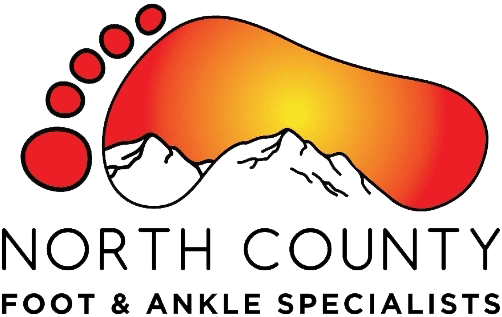Morton's Neuroma
Experiencing persistent pain in the ball of your foot?
Struggling to perform your day-to-day activities due to this discomfort?
You might be suffering from Morton's neuroma. We can help you find relief at Escondido, CA's North County Foot & Ankle Specialists.
5-Star Reviews From Escondido, CA, Patients
Came in with major foot pain, and Dr Morris figured it out and now my feet have never felt so good
View on GoogleI followed Dr. Avanti Redkar from Beverly Hills to Escondido, which is a 2-hour drive from my house. Dr. Redkar is an excellent Podiatrist who took time to examine my feet and explained the treatment and management options in detail. She and her assistant are professional and courteous. Thank you, now I have pain-free feet.
View on GoogleImportant Details About Morton's Neuroma
A neuroma is a thickening of nerve tissue that may develop in various parts of the body. The most common neuroma in the foot is a Morton’s neuroma, which occurs on the forefoot between the third toe and fourth toe. It is sometimes referred to as an intermetatarsal neuroma. Intermetatarsal describes its location in the ball of the foot between the metatarsal bones. Neuromas may also occur in other locations in the foot.
The thickening of the nerve that defines a neuroma is the result of compression and irritation of the nerve. This compression creates enlargement of the nerve, eventually leading to permanent nerve damage. Because untreated Morton's neuroma can cause irreversible harm, it is extremely important that you receive treatment if you are experiencing any symptoms.

How to Know You Are Suffering From Morton's Neuroma
The best way to find out if you have this condition is during an in-person consultation with Dr. Jason Morris or Dr. Avanti Redkar. You should request an evaluation if you are experiencing any of the following symptoms:
- Tingling, burning, numbness, or pain
- A feeling that something is inside the ball of the foot
- A sensation that there is something bunched up in your shoe or sock
How Morton's Neuroma Progresses
Diagnosing Your Foot Condition
To arrive at a diagnosis, your foot and ankle surgeon will obtain a thorough history of your symptoms and examine your foot. During the physical examination, the doctor attempts to reproduce your symptoms by manipulating your foot. Other tests, X-rays, or imaging studies may be performed.
The best time to see a foot and ankle surgeon is early in the development of your symptoms. Early diagnosis of a Morton’s neuroma greatly lessens the need for more invasive treatments and may help you avoid surgery.
Non-Surgical Solutions For Mortons Neuroma
Padding
Padding techniques provide support for the metatarsal arch, thereby lessening the pressure on the nerve and decreasing the compression when walking.
Icing
Placing an ice pack on the affected area helps reduce swelling.
Orthotic Devices
Custom orthotic devices provided by your foot and ankle surgeon provide the support needed to reduce pressure and compression on the nerve.
Activity Modifications
Activities that put repetitive pressure on the neuroma should be avoided until the condition improves.
Shoe Modifications
Wear shoes with a wide toe box and avoid narrow-toed shoes or shoes with high heels.
Medications
Oral nonsteroidal anti-inflammatory drugs (NSAIDs), such as ibuprofen, may be recommended to reduce pain and inflammation.
Injection Therapy
Treatment may include injections of cortisone, local anesthetics, or other agents.
Surgery May Provide The Best Relief
/
If nonsurgical treatments do not achieve adequate relief, you may need surgical treatment to remove the damaged nerve area or release tissue surrounding the nerve. Success rates for Morton's neuroma surgery can be as high as 95%.













